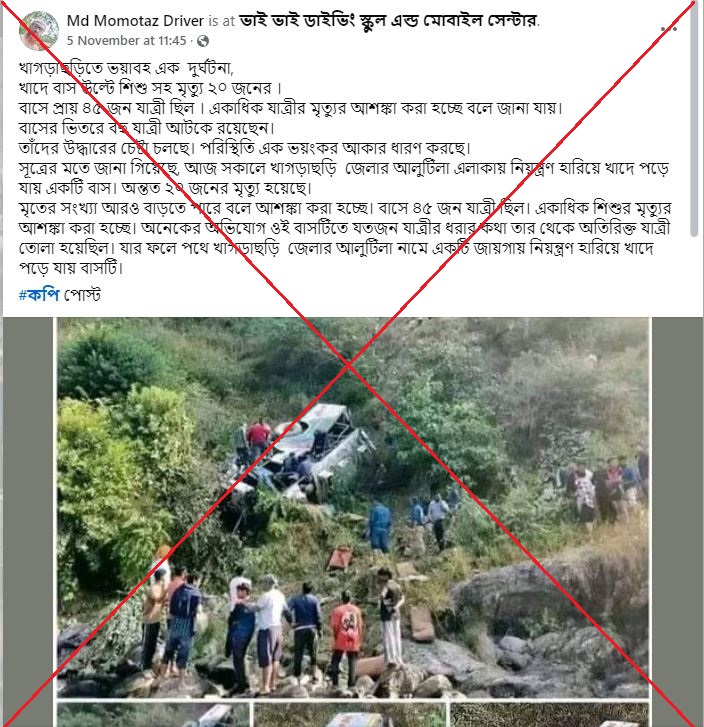Misinformation surrounding road accidents has become alarmingly prevalent on social media, with users often disseminating unrelated images to convey false narratives. A recent example involved the circulation of photographs from a tragic bus accident in India, which were incorrectly attributed to a fictitious incident in Bangladesh. Various Facebook posts recounted a fabricated story of a bus plunging into a gorge in Khagrachari, where, reportedly, 20 people, including children, lost their lives. The misinformation spread rapidly, with one specific post garnering over 700 shares. The post falsely claimed that the bus contained 45 passengers, stating that many individuals remained trapped inside, and that a rescue operation was ongoing. This incident highlights the grave issues stemming from the spread of inaccurate information, often fueled by unverified imagery.
The deceptive posts surrounding the Khagrachari accident were based on photos that actually originated from a significant bus crash in India that occurred on November 4, 2024, in Uttarakhand. In the Indian incident, a bus fell into a gorge in the Almora district, resulting in the tragic deaths of at least 36 individuals and injuring several others. AFP’s investigation into these claims determined that there were no credible reports or evidence of an accident in Khagrachari as of November 13, 2024. This reinforces the importance of fact-checking and verifying images before sharing, as misleading information can lead to widespread panic and misinformation.
Upon conducting reverse image searches, AFP tracked down the origin of the photographs used in the false narrative. The images had been shared by credible Indian news agencies, such as ANI and the Press Trust of India, in connection with the actual accident in Uttarakhand. News articles detailed the casualties and the toll of the incident. For instance, ANI reported that 23 individuals were killed, while additional sources confirmed the overall number of fatalities to be at least 36. This stark contrast shows the consequences of misrepresenting tragic events to distort reality.
The images that formed part of the misinformation campaign were examined and compared to the photos published by credible news sources. This analysis revealed that the pictures used in the false posts matched those taken at the site of the genuine accident in Almora, reaffirming the need for diligence in scrutinizing the authenticity of shared content. The journalist from AFP identified notable religious references on the bus, corresponding to popular pilgrimage sites in Uttarakhand, thereby further linking the images to the recent India accident and debunking the fabricated narrative surrounding Khagrachari.
In addition to misleading images, the circulation of false information can cause unnecessary distress and confusion among the public. When incidents of this nature arise, it is crucial for social media users to exercise caution and verify facts before disseminating content. The rapid sharing of misinformation can undermine trust in legitimate news sources and create a culture of skepticism regarding real tragedies. It is essential for individuals to become more literate in discerning valid information, emphasizing the importance of relying on verified accounts rather than sensationalized social media posts.
Overall, the case of the misinformation about the bus accident illustrates the significant impact social media can have on the spread of false narratives, especially concerning tragic events. As platforms continue to expand, the need for critical thinking and fact-checking becomes increasingly important to combat the spread of misinformation and protect those affected by real tragedies. Efforts to promote media literacy, increase public awareness, and encourage responsible sharing behaviors are essential in mitigating the effects of misinformation and ensuring that the truth prevails in times of crisis.

